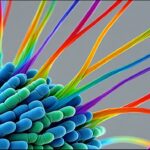Floating Raindrop Device Creates Clean Electricity Using Water as Power Source
A new study introduces a creative way to turn rainfall into renewable power. The device floats on water and uses natural droplets to create electricity. As a result, it offers a low-cost and lightweight energy option.
A Simple Idea With Big Potential
Raindrops contain free mechanical energy. Scientists have tried to convert this energy into power for years. However, earlier generators relied on heavy materials and didn’t scale well.Researchers from Nanjing University of Aeronautics and Astronautics took a fresh approach. They designed a floating generator that uses the water beneath it as support and as an electrode. This shift cuts weight by nearly 80 percent and lowers cost by about 50 percent. In addition, it still produces strong electrical pulses from each falling drop.
How Water Boosts Power Output
When a drop hits the top film, the water below absorbs the impact. This happens because of its natural pressure and surface tension. The droplet then spreads smoothly, which improves energy transfer.Water also contains ions that carry electrical charge. Therefore, the water layer works as a reliable electrode. Together, these features help the device produce around 250 volts per droplet, similar to traditional metal-based systems.Durability is another key strength. The generator stayed stable in heat, cold, salt water, and even lake water. Clever drainage holes use surface tension to remove extra droplets and maintain performance.
Designed for Real-World Use
The team also built a larger model. It covered 0.3 square meters and powered 50 LEDs at once. It even charged capacitors within minutes. This shows strong promise for sensors, off-grid electronics, and distributed energy systems on lakes or coasts.Researchers believe this water-integrated design could inspire new sustainable technologies. Although more testing is needed, the prototype marks an exciting step toward clean, land-free power generation.






